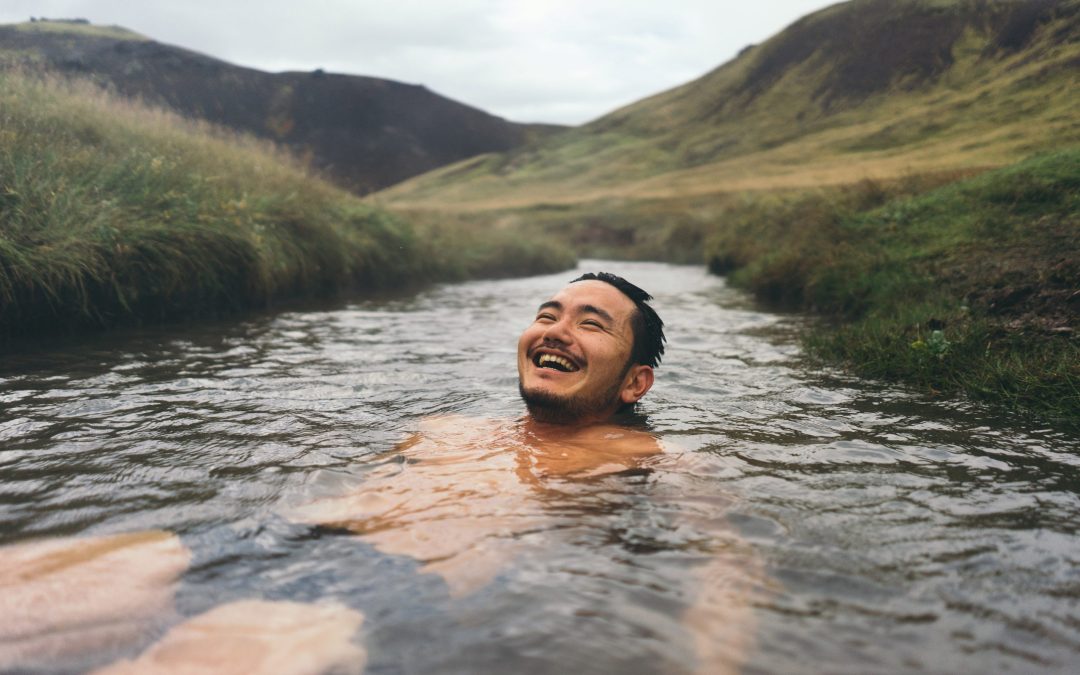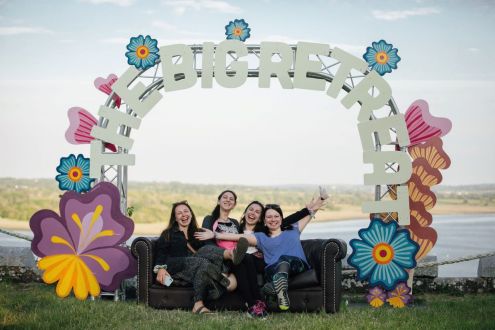4 wellness rituals you need to know about
Traditional societies around the world celebrate nature and the changing seasons with ancient rituals. Summer is a wonderful time to get outside and share them, and deepen our relationship with the earth, writes Jini Reddy

6 minute read
The nature ritual that I practise is a low-key affair – but it is the most heartfelt way that I connect with the earth. I go for a stroll after breakfast, find a spot in a meadow and sit on a log. I close my eyes, soak in the stillness and remember that whatever is happening in my life, right now I am OK, and I am aligned with the earth goddess Gaia.
It comes into its own in summer, when I want to move slowly, linger, delight in, and bear witness to the beauty around me: gardens bursting with life, trees in full leaf, flowers in bloom, aphrodisiac scents… I’m fortunate to have a quiet wooded trail at the end of my street, leading to green spaces and a small lake. On a hot summer’s day, it’s a personal paradise and the pressure of work and any worries fade. As a ritual, it’s simple and requires no skill, but I couldn’t thrive without it.
In cultures around the world, nature rituals are part of life and often, like mine, they are small and meaningful. At their core, they are about deep connection – a reciprocal giving and taking, and commitment to caring for nature. Here are some summer rituals practised around the world, from which to draw inspiration.
Hot springs bathing in Iceland
Bathing rituals and water-honouring festivals are enshrined in traditions around the world. Water is cleansing and healing – when we’re near water, we enter a more meditative state. Water is connected to the moon and the lunar cycles, and the element represents our emotions. For some, summer is the time to honour the goddesses and deities of water.
In Iceland, locals adore their geothermal waters. The country is bursting with geysers, lagoons, mud pools and hot springs. Going for a dip is a regular pastime and source of nourishment and rest. Hot springs are a communal space where people from different generations gather. There is an exhilarating contrast between being immersed in hot water, while exposed to crisp, bracing fresh air.
Do it here: In the city of Bath, you can soak in Britain’s only natural thermal waters at the Thermae Spa. In Roman times, piping hot water was pumped into the pools or spas of bathhouses here. The Celts revered the goddess Sulis at the Cross Bath, one of the pools in the complex.
‘We’re largely composed of water, so the element is essential to us. It’s the source of life,’ says Charlotte Pulver, who creates healing rituals, which may involve a water blessing or dunking. Wild swimming has also become popular and bathing in a lake under a full moon is a purifying experience.
Sun dancing in North America
The sun dance is a ceremony with ancient roots, practised by the indigenous people of Canada and the United States. It is a rigorous ritual; a prayer for renewal, and to offer thanks for your life, tribe and the earth.
Traditionally, the sun dance took place in midsummer and was overseen by a shaman. Indigenous cultures honour the spirits of the air, water, rocks, plants and animals, as well as the spiritual nature of humans. Trance-like states were induced through drumming and dancing over several days and nights and a tree was ceremonially felled and erected in the centre of the dance site, to symbolise the tree of life (new beginnings, growth and strength).
Communities still celebrate the sun dance, and a pole stands in for the tree. Those who take part pray for loved ones, community and country, sending out their prayers in ever-widening circles. To preserve the integrity of the sun dance, it is never filmed.
Do it here: Summer is the time to offer gratitude, ask for blessings and honour the land. A friend who follows this tradition prays while dancing at sacred sites such as Stonehenge or Avebury at the height of the summer. Or why not go to your local woods and sing to a tree you love and, if you feel brave – dance in celebration of life!
Moss meditation in Japan
You’ve probably heard of shin-rin yoku – the practice of forest bathing. It is, essentially, a mindful walk in the woods – but did you know that the Japanese have a fondness for moss meditation, too? The green stuff, which casts an eerie, atmospheric glow over rocks and turns woods into places of enchantment, is popular with nature lovers, who walk in forests in search of mossy spots for contemplation.
Do it here: Make a pilgrimage to Devon’s Wistman’s Wood. Its tangle of twisted trees and moss-covered boulders are a backdrop for fairy and folk tales, and will hold you spellbound. For inspiration, read Elizabeth Gilbert’s bewitching novel ‘The Signature Of All Things’ (Bloomsbury, £9.99).
Incense burning in China
In China, the Naxi people have a custom that involves burning incense made from sacred plants and herbs. ‘They don’t do it to make a room fragrant or to meditate – the effort of creating the incense makes its burning an important ritual; a way of giving back,’ says environmentalist Judy Ling Wong. Burning herbs for purification, grounding and to drive away negative energies is common in many cultures: sage by Native Americans and palo santo, or ‘holy wood’, among Amazonian people. Ancient Egyptians and Greeks also burned herbs as an offering to the gods.
Do it here: A smudge stick (a baton of rolled-up or braided dried herbs) can be made from lavender, rosemary, wild sage, basil and thyme. To deepen the practice, grow your own herbs. Plants that grow wild, such as meadowsweet or pine can also be used. If you forage, use a field guide with photos for reference and only take what you need. When burning, don’t inhale the smoke directly and keep your windows open. Bury the remainder of the bundle to complete the cycle.
Image: Getty









